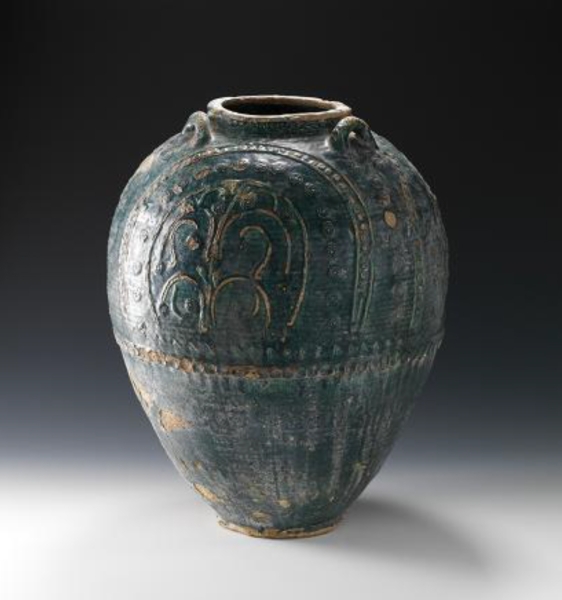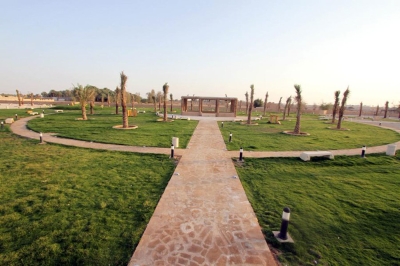
A Glazed Pottery Jar is one of the archaeological artifacts selected to participate in the Saudi Archeological Masterpieces Through the Ages Exhibition, held at the Louvre Museum in the French capital, Paris, in 2010. The exhibition featured three hundred original artifacts of various materials from different historical periods, originating from different regions of the Kingdom of Saudi Arabia. These artifacts were classified into three groups according to their chronological order: artifacts from prehistoric periods, pre-Islamic periods, and Islamic periods.
Description of the jar
The jar is a large oval-shaped vessel discovered in the historical area of al-Rabatha, located approximately two hundred km east of al-Madinah al-Munawwarah, on the edge of the western Hejaz Mountains in Saudi Arabia.
The glazed pottery jar was crafted from yellow clay, mixed with some organic and stone impurities. It narrows at the top, forming a small opening, and features two handles shaped like ears, symmetrically positioned on the upper shoulders. The jar has a small circular base with a rim that has been affected by the passage of time. A raised decorative band encircles the middle of the jar, adorned with intricately crafted relief patterns. Above this band, raised decorative motifs in the form of branches and flowers cover the entire upper body of the jar. The outer surface is coated with a dark blue glaze, and the jar is wheel-thrown, oxidized-fired, and exhibits high durability.
History of the jar
This glazed jar dates back to the seventh century and was used for storing solid foods and preserving liquids.
Its discovery is part of the archaeological survey and excavation efforts carried out by the antiquities and museums sector in Saudi Arabia over the past years. It is one of the finds made by Saudi archaeologists and scientific missions, which continue to uncover the treasures of the successive civilizations that inhabited the region.
The glazed pottery jar is preserved at the Museum of the Department of Archaeology at King Saud University in Riyadh.
Significance of the jar
This large jar is considered one of the distinctive examples of massive jars crafted using the slip-training (barbotine) technique, belonging to the style of alkaline-glazed pottery or monochrome ceramics. This style was produced by Muslim potters in major Islamic urban centers, particularly in the Arabian Peninsula, between the ninth and tenth centuries. The production of this type of pottery was known in pre-Islamic times, especially in Persia, and was used for storing and preserving solid foods and liquids.
Related quizzes
Related articles

